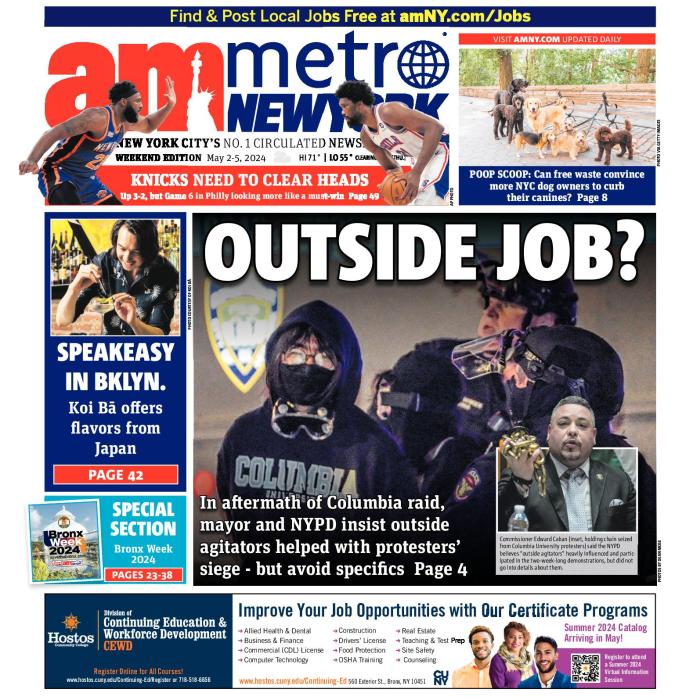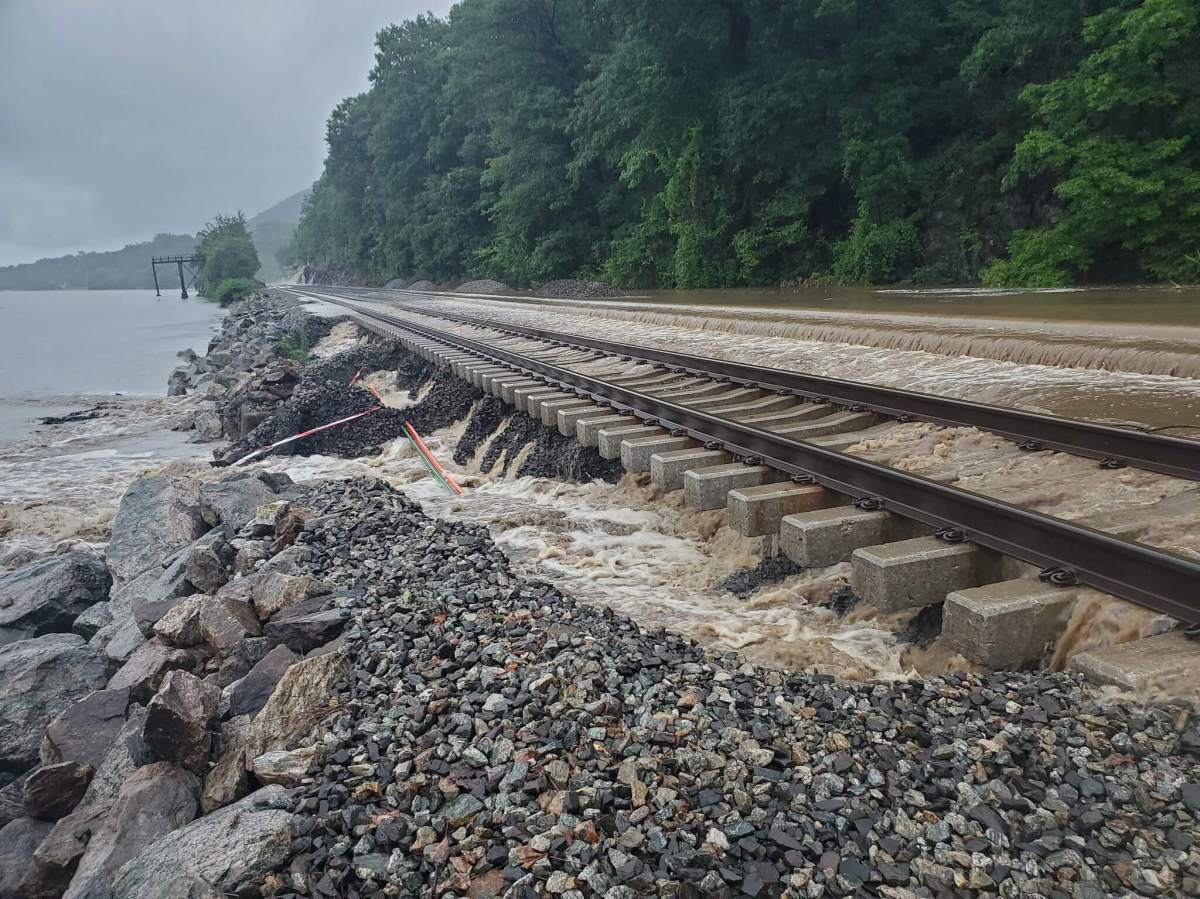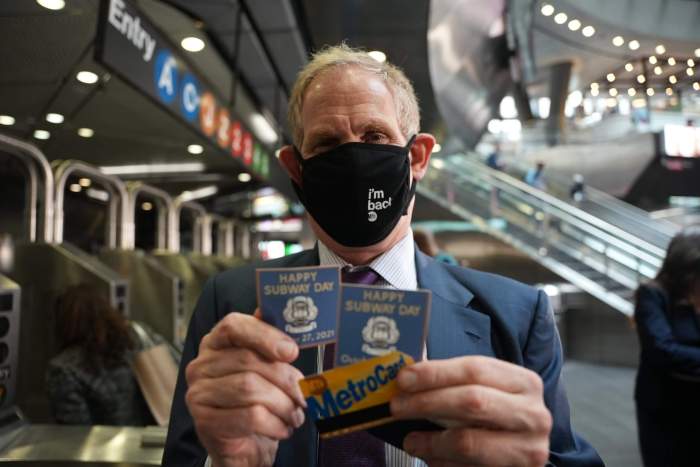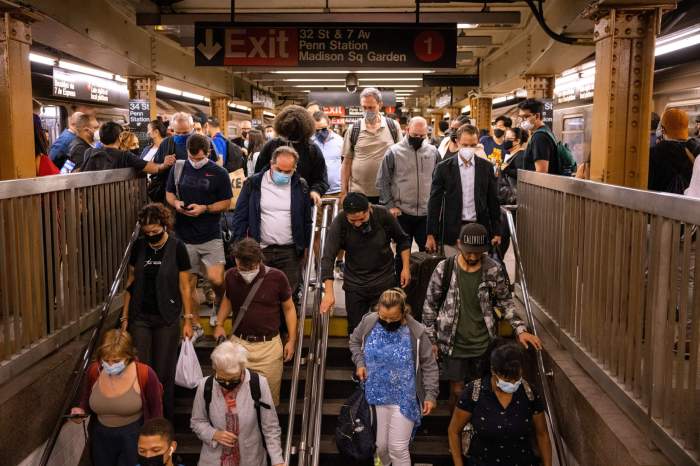The MTA’s Metro-North Railroad partially shut down service on its Hudson and Harlem lines upstate on Monday amid severe and deadly flooding in the Hudson Valley, while Amtrak shut down its service from New York to Albany.
Metro-North shut down service on the Hudson Line north of Croton-Harmon late Sunday night, with the MTA noting that floodwaters and mud had engulfed the tracks and fallen trees, boulders, and other debris were blocking the right of way. Metro-North president Cathy Rinaldi said in an interview on WCBS 880 radio that stone ballasts undergirding the rails closest to the Hudson River had washed away, while on the inland rails, water had washed over and inundated the tracks.
Railroad workers worked through the evening to clear the tracks but service remained suspended between Croton-Harmon and Poughkeepsie on Monday morning, with the right-of-way still considered impassable.
The closure also affected Amtrak’s Empire Corridor service between Penn Station and Albany, which uses the Hudson Line tracks in its southern portion; Amtrak said New York-to-Albany service would be shuttered at least through Monday.
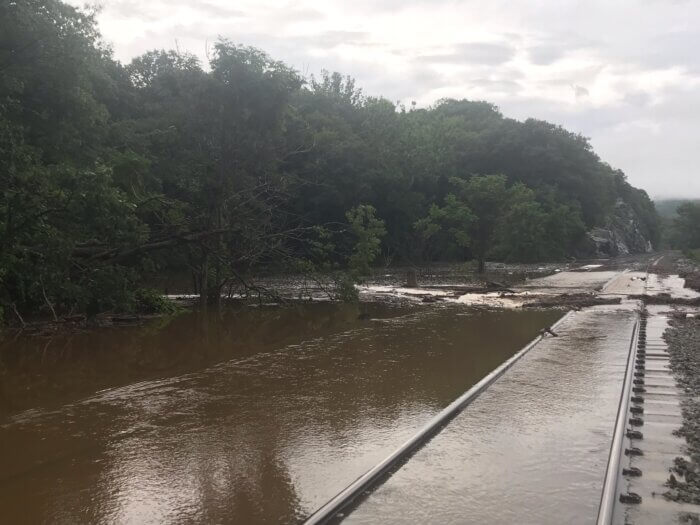
Then, on Monday morning, the MTA shut down service on the Harlem Line north of Southeast, noting floodwaters had washed out the tracks and created dangerous conditions between Southeast and Wassaic.
The MTA is providing shuttle bus service to customers at all stations between Southeast and Wassaic on the Harlem Line. Shuttle buses were not running along the Hudson Line in the morning rush, with Rinaldi noting that authority was still scrambling to secure jitneys.
But late Monday morning the MTA announced shuttle bus service would start at 1 p.m. and be in place for the afternoon rush, departing from Croton-Harmon but only stopping at Cortlandt, Beacon, and Poughkeepsie.
Rinaldi said in the radio interview that she did not expect service to be restored on the shuttered segments for the afternoon rush. “I think it’s unlikely that it would be today,” she noted.
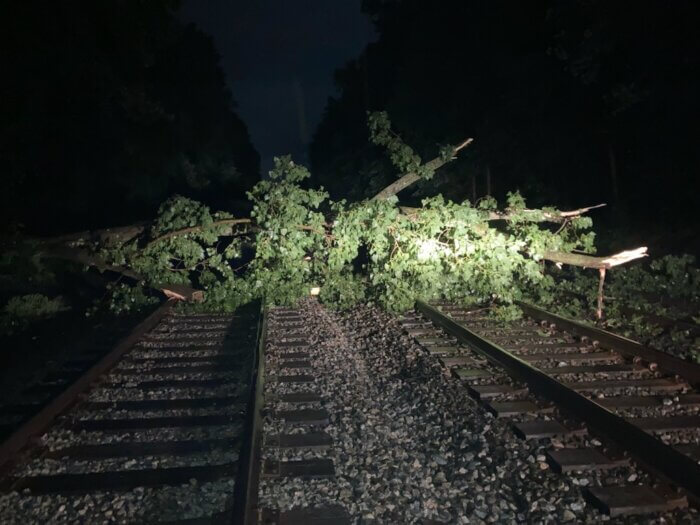
Service is still running on the Hudson and Harlem Lines south of the affected stations to-and-from Grand Central Terminal. The MTA is suggesting people work from home if they are able to.
Service was not affected on the New Haven Line, which runs mainly in Connecticut, is unaffected, though the National Weather Service had all of Connecticut under a flood watch Monday morning. Service on the New Canaan branch line is shuttered with free shuttle bus service available, though that is for pre-planned track repairs running through September.
Rinaldi said she had not seen the railroad so affected by a storm since Hurricane Ida in 2021, which killed 17 New Yorkers.
At least one person had been confirmed dead as of Monday morning from the flooding in the Hudson Valley, which was pounded with about 8 inches of rain which swamped roadways and dislodged boulders.
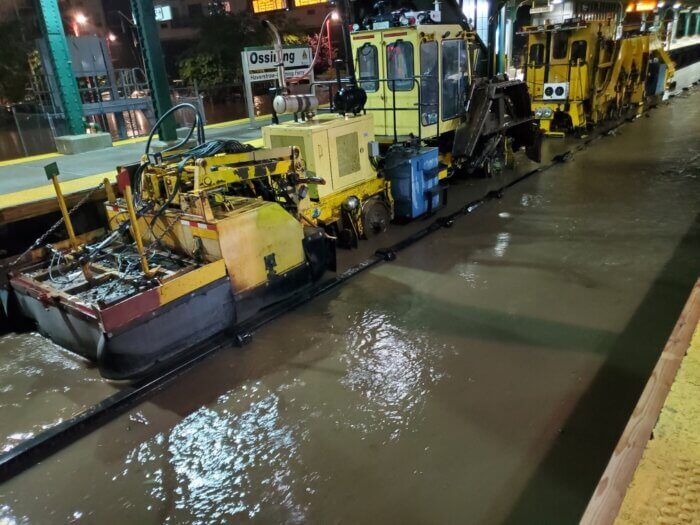
Governor Kathy Hochul said that a 35-year-old woman had died in Orange County when she and her dog went outside to inspect damage to her home, which was facing severe flooding. Her fiancee watched her get swept away in the floodwaters. Orange County Executive Steve Neuhaus said that the woman’s body was found in a ravine, during a dangerous rescue operation for first responders.
Several others in Orange County are considered missing, and at least one home was swept off its foundation.

“The skies opened up, and wrought so much rain, nine inches of rain in this community, that they’re calling this a one-thousand-year event,” Hochul said in Highland Falls, a village in Orange County.
“My friends, this is the new normal. And we in government, working with our partners on the ground, have to work with our communities to build up resiliency to be prepared for the worst, because the worst continues to happen,” the governor continued. “You only need to walk through these streets, and see the pain in people’s eyes, as they describe to me their loss, their fear, their anxiety.”
